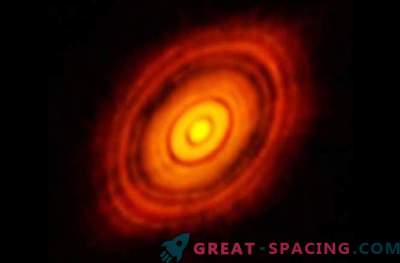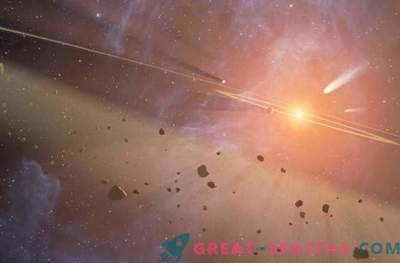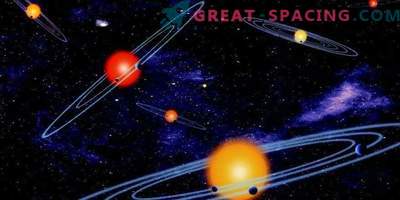
For a long time, astronomers have been trying to unravel the strange transit signal received by the NASA Kepler space telescope. Now scientists have a clue.
You know the story: Kepler is used to detect the transit of exoplanets around other stars. His strength lies in the fact that he can detect a very weak immersion in the light of stars, caused by the passage of worlds located at a distance of tens and hundreds of light years. The Kepler database is truly huge, therefore, to help astronomers identify transit signals, the research group “Planet Hunters” analyzes the signals.
One signal coming from the star KIC 846852, which was named the “TABBI Star” in honor of the discoverer Tabety Boyadjian, was mysterious. No, it was unprecedented! A series of transit signals caused star staring up to 20 percent. Up to this point, the maximum change in signals recorded by Kepler was a fraction of a percent, so you can understand why the detected signal caused such a fuss. The most interesting thing was that this signal was confirmed and could not be caused by a technical defect or be an error in the calculations. Therefore, astronomers began to work on possible explanations. But the media ahead of scientists. Among the theories they advanced were evidence of an advanced alien civilization that built “megastructures” and the first evidence of the Dyson sphere.
But scientists, being skeptics, were looking for more plausible explanations.
One of the reasons they saw the possibility of a planetary collision. Although the probability of observing a planetary collision was negligible, it did not mean that it could not be seen. According to another theory, a swarm of comets has become a possible cause of a change in the brightness of a star. The latter explanation could have been caused by the passage of another star next to the TABBI star, which destabilized the Oort cloud (the area surrounding the star, which is filled with countless ice bodies) and caused comets to deviate from their gravity course and plunge into the inner part of the star system.
Currently, researchers from the Harvard-Smithsonian Center for Astrophysics are examining the TABBI star using the Atakam large millimeter / submillimeter array and the James Clark Maxwell Telescope in an attempt to track the dust associated with a planetary collision. The warm dust that will be produced by such an event should glow in emissions in the submillimeter and millimeter radio waves. They did not find.
This zero result places some hard limits on the amount of dust in the system. There simply is not enough dust to support the collision hypothesis, but there is a decay of 30 comets like Halley's comet.
But astronomers cannot explain why dozens of comets can decay at once, there is no known mechanism that can lead to this. Interestingly, this new find does not necessarily disprove the theory of the megastructure, but it undoubtedly has a simpler explanation.
Thus, we get: we cannot say with 100% certainty that this is an alien activity, but the hypothesis exoplanet has become more likely.











































